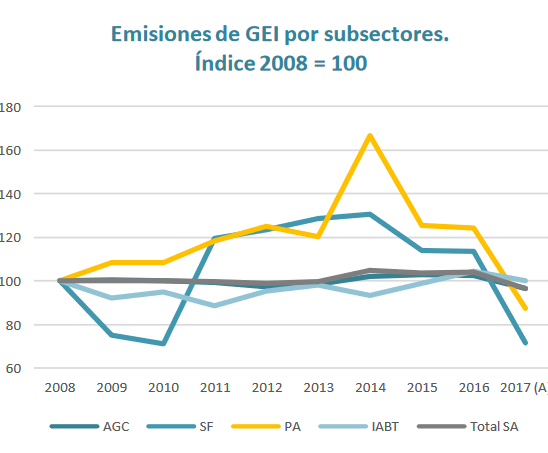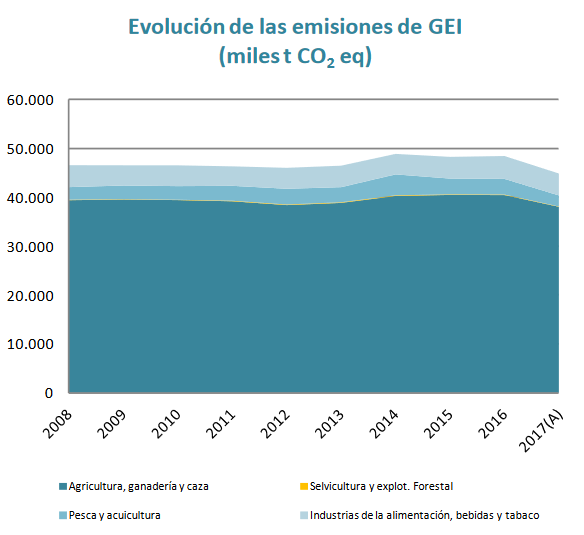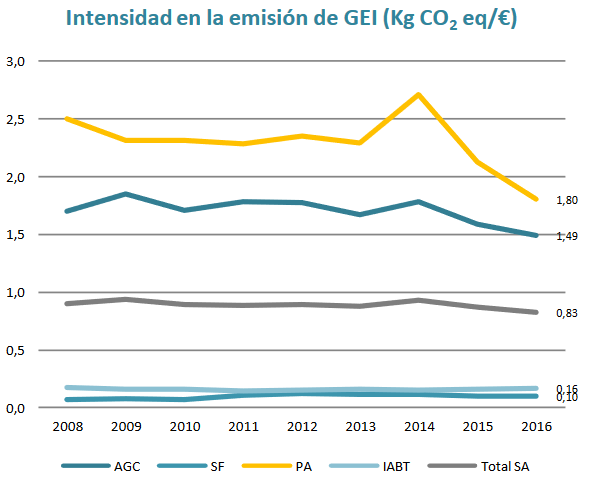Spain: The agro food sector cut its GHG emissions by 3.7% between 2008 and 2017
In 2017, greenhouse gas (GHG) emissions from the Spanish agro food sector were 44.89 million tons of CO2 equivalent, 7.4% less than the previous year and 3.7% below those of the start of the series in 2008.

By subsectors (Fig. 1), the main cause of emissions is agriculture and livestock farming (AGC), which accounted for 84.8% of the total in 2017. It was followed by the food, beverages and tobacco industry (IABT), with 20%; fishing and aquaculture (PA), with 5%; and forestry (SF), with only 0.2%.

Fig. 1. GHG emissions by subsectors
Over the 2008-2017 period, the GHG emissions’ evolution has been diverse (Fig. 2). While, in 2017, fisheries and aquaculture (-12.5%) and specially forestry (-28.6%) were clearly below the emissions figures of nine years earlier, those of industry (-0.1%) and agriculture and livestock (-3.4%) changed relatively little.

Fig. 2. Evolution of GHG emissions
By processing these data together with the gross value added data (here the official data are only up to 2016), an indicator of GHG emission intensity in relation to economic output can be calculated. Thus (Fig. 3), the highest intensity is recorded in the fisheries and aquaculture subsector, although with a clearly declining profile despite its upturn in 2014. Agriculture and livestock ranks second, with a declining slope as well. Industry and forestry subsectors are below the sector average.

Fig. 3. GHG emission intensity
Source: Cajamar